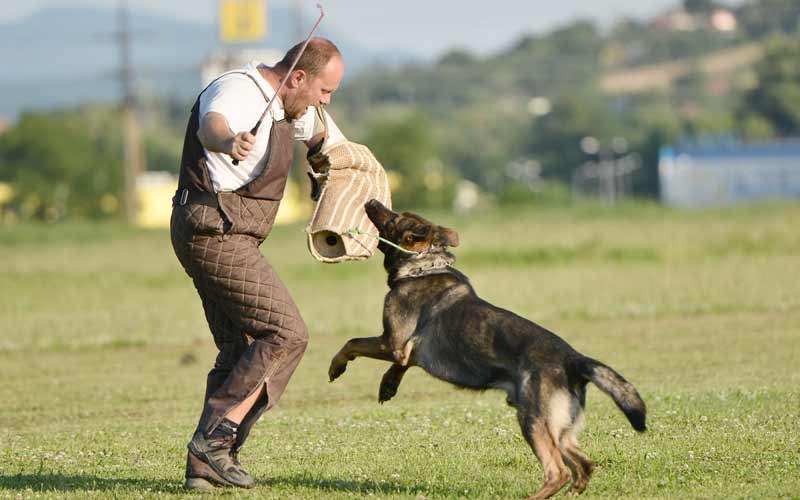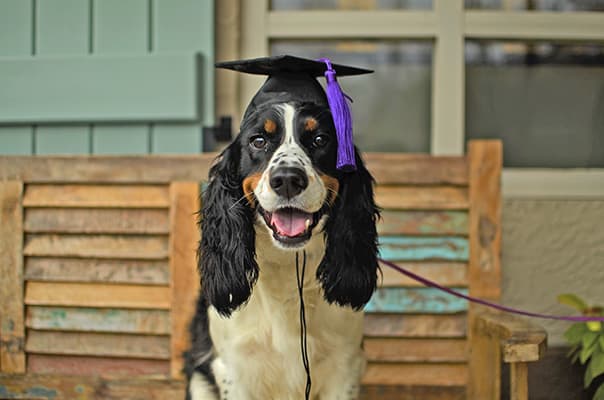Master Dog Training at Home with These Simple Techniques and Tools
Master Dog Training at Home with These Simple Techniques and Tools
Blog Article
Unlock Your Pet's Possible With Professional Training Insights
Professional training understandings expose that identifying interaction cues and using constant, favorable reinforcement can significantly modify your canine's response to different situations. As we discover effective socializing techniques and progressed training methods, one might wonder exactly how these strategies can change not just your pet dog's behavior, yet also your general relationship.
Recognizing Your Dog's Habits

Additionally, comprehending typical behavior issues such as aggression, stress and anxiety, or too much barking can aid owners address troubles proactively. Rather than penalizing unfavorable actions, it is extra effective to identify the underlying causes and work towards customizing those triggers. For instance, a pet that barks exceedingly might be seeking focus or reacting to ecological stimuli.
Moreover, each canine is distinct, influenced by elements such as breed, age, and past experiences. As a result, observing and comprehending your pet dog's details habits is vital to developing a training strategy that aligns with their character. By promoting this understanding, proprietors can develop a more unified living environment, improve their dog's learning experience, and ultimately strengthen their bond.
The Relevance of Consistency
Maintaining consistency in training is crucial for attaining wanted outcomes and enhancing positive behaviors in canines. When training sessions comply with a predictable structure, pet dogs are most likely to understand what is expected of them. This quality promotes a feeling of security and helps to establish a strong bond in between the pet and the trainer.
Inconsistent signs or commands can confuse pets, bring about disappointment for both the trainer and the pet. If a command is sometimes rewarded and other times ignored, the canine may end up being unpredictable concerning exactly how to react. This variance not just interferes with the discovering procedure yet can additionally unintentionally encourage unfavorable habits.
In addition, uniformity extends beyond spoken commands to consist of body movement and tone. Canines are extremely in harmony with human actions, and discrepancies can undermine their trust fund. For efficient training, all family members and trainers ought to be straightened in their technique, utilizing the same commands and support techniques.
Ultimately, consistency in training advertises a structured understanding atmosphere, allowing pets to grow and react positively to commands. This fundamental concept is crucial for creating well-behaved, confident, and obedient friends.
Techniques for Reliable Training
Reliable training strategies build on the structure of uniformity developed in previous sessions. Utilizing favorable support is one of one of the most reliable approaches for encouraging wanted habits. This entails gratifying your pet dog with deals with, praise, or playtime immediately after they execute the wanted action, hence creating a solid organization in between the behavior and its positive end result.
Timing is crucial; rewards need to be offered without delay to reinforce the link. Additionally, utilizing constant and clear commands will certainly aid your pet comprehend what is anticipated of them. Select easy, unique signs and avoid utilizing numerous expressions for the same action.
Incorporating brief, engaging training sessions can likewise boost retention and stop boredom. Aim for sessions lasting 5 to 10 minutes, progressively enhancing the duration as your dog comes to be much more proficient. Moreover, varying the training setting can aid generalise found out behaviors, ensuring your pet can do commands in different contexts.
Last but not least, persistence is crucial. Every pet discovers at their own speed, browse this site and support cultivates a favorable knowing experience. By applying these methods regularly, you can unlock your dog's full possibility and strengthen the bond in between you and your canine buddy.
Socialization and Its Benefits
Socialization is an important element of a pet dog's advancement, considerably affecting this contact form their behavior and personality. It incorporates the procedure of revealing a dog to a variety of people, environments, seems, and various other animals. This exposure helps pet dogs learn to browse the intricacies of their surroundings, cultivating self-confidence and adaptability.
Proper socialization reduces the chance of fear-based actions and aggression, which can arise from unknown circumstances. A well-socialized pet is more probable to exhibit positive interactions with both human beings and other animals, resulting in a much more satisfying experience for every person included (Dog training). Socialization plays an essential role in enhancing a canine's total high quality of life, allowing them to get involved in activities and outings without too much stress and anxiety.
The important period for socialization takes place between 3 and twelve weeks of age, although continuous socialization is beneficial throughout a dog's life. Engaging in supervised playdates, puppy courses, and progressive exposure to brand-new experiences can facilitate this process. By focusing on socialization, pet dog proprietors can grow an all-around buddy, equipped to handle numerous circumstances with poise and calmness, ultimately causing a harmonious connection in between the canine and its setting.
Advanced Training Techniques
A well-socialized pet is better prepared to participate in advanced training methods, which can even more fine-tune their skills and enhance their general behavior. Advanced training strategies, such as clicker agility, scent, and training work, call for a strong foundation of standard obedience and social abilities. These approaches concentrate on establishing a pet dog's cognitive abilities, boosting their emphasis, and promoting a deeper bond between the canine and trainer.
Clicker training uses positive reinforcement to shape wanted habits, enabling accurate interaction and quicker knowing. This approach is specifically effective in advanced tasks where precision is critical. Agility training tests pet dogs both physically and psychologically, advertising control, confidence, and analytical skills. This can be an exhilarating means for pet dogs to burn energy while enhancing their responsiveness to commands.
Scent job taps into a dog's all-natural reactions, boosting their olfactory abilities while constructing their focus and patience. Incorporating these advanced training techniques not only stimulates a pet dog's mind yet additionally adds to their emotional wellness. Eventually, engaging in advanced training can change a well-socialized dog right into a well-shaped friend, efficient in browsing intricate environments easily and confidence.
Verdict
In final thought, opening a canine's capacity via professional training demands a comprehensive understanding of actions, consistency in methods, and effective socialization methods. By focusing on these components, a well-rounded and fulfilling relationship between canine and owner can be established, eventually leading to an unified coexistence and a well-behaved companion.
As we explore effective socialization techniques and advanced training methods, one may question exactly how these strategies can change not just your pet dog's habits, however likewise your general connection.
By prioritizing socializing, pet dog owners can grow an all-round companion, geared up to deal with different situations with grace and calmness, eventually leading to a harmonious connection between click for info the dog and its setting. (Dog training)
A well-socialized pet is much better prepared to involve in sophisticated training techniques, which can even more improve their skills and boost their overall habits. These methods concentrate on developing a pet dog's cognitive abilities, enhancing their emphasis, and promoting a deeper bond in between the dog and handler.

Report this page